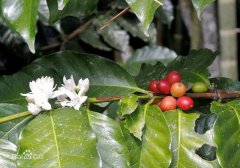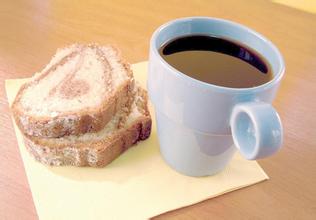Introduction to the Origin of the planting History of El Salvador Coffee
El Salvador: in the name of coffee, there are many wars in Latin America, wars, bloody killings, waves of revolutionary struggles in the name of coffee. For example, coffee was high in El Salvador in the 1930s. On January 22, 1932, coffee-producing Indians in the western highlands of El Salvador revolted at the call of Communist Party leader Marty. That night, Mount Izako suddenly erupted, seemingly to vent the anger of farmers who had been persecuted for a long time. However, farmers with sticks and iron hoes could not resist the army's bullets and were brutally suppressed by dictator Martinez. To protect the safety of coffee field owners and high society, the military went on a killing spree. In just a few weeks, 30,000 people were slaughtered and Marty was also killed. The killing with coffee is still listed as a historical event in Latin America, with wars, bloody killings and waves of revolutionary struggles in the name of coffee. For example, coffee accounted for 90% of El Salvador's exports in the 1930s, and Indians who bled and sweated in the coffee fields earned 12 cents a day for 10 hours of hard work, and their status was no different from that of slaves in El Salvador: in the name of coffee, igniting war in Latin America, war after war, bloody killings, waves of revolutionary struggle in the name of coffee. For example, coffee was high in Salva in the 1930s.

Important Notice :
前街咖啡 FrontStreet Coffee has moved to new addredd:
FrontStreet Coffee Address: 315,Donghua East Road,GuangZhou
Tel:020 38364473
- Prev

Panamanian Don Pepe Manor Coffee beans Cupid Manor Coffee grown in Panama
Boutique coffee (specialty coffee) is also called specialty coffee selection coffee. It refers to coffee made from a small number of raw beans with excellent taste grown in an ideal geographical environment. Depending on the special soil and climatic conditions in which they grow, they have outstanding flavor. After strict selection and classification, this kind of coffee is hard in texture, rich in taste and stylish.
- Next

Coffee producing countries in Africa-Honduras Coffee introduction to San Juan Xido region
According to a recent report released by the Africa Division, leaders of the Honduran Ministry of Agriculture plan to convert 8% of the country's coffee farms to cocoa. The news came from the country's Ministry of Economic Development and the National Coffee Association ihcafe told Reuters, the country's Minister of Economic Development Alden Rivera pointed out that because many coffee farms are affected by the particularly serious leaf rust disaster, if the planting is not converted.
Related
- Does Rose Summer choose Blue, Green or Red? Detailed explanation of Rose Summer Coffee plots and Classification in Panamanian Jade Manor
- What is the difference between the origin, producing area, processing plant, cooperative and manor of coffee beans?
- How fine does the espresso powder fit? how to grind the espresso?
- Sca coffee roasting degree color card coffee roasting degree 8 roasting color values what do you mean?
- The practice of lattes: how to make lattes at home
- Introduction to Indonesian Fine Coffee beans-- Java Coffee producing area of Indonesian Arabica Coffee
- How much will the flavor of light and medium roasted rose summer be expressed? What baking level is rose summer suitable for?
- Introduction to the characteristics of washing, sun-drying or wet-planing coffee commonly used in Mantenin, Indonesia
- Price characteristics of Arabica Coffee Bean Starbucks introduction to Manning Coffee Bean Taste producing area Variety Manor
- What is the authentic Yega flavor? What are the flavor characteristics of the really excellent Yejasuffi coffee beans?

